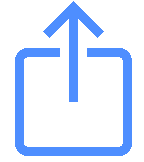Touchdown in the glittering United Arab Emirates, and while you’re ready to dive into dazzling sights, you might be wondering: how exactly do you handle cash, especially when your wallet feels a little light and you need to withdraw money from an ATM here? Getting local currency is straightforward. We’ll guide you through using ATMs in the UAE.
Locating ATMs Across the UAE
Finding an ATM in the UAE is incredibly easy. They’re ubiquitous, meaning you’ll spot them almost everywhere you go. Major shopping malls like The Dubai Mall, Mall of the Emirates, and Abu Dhabi’s Yas Mall have numerous ATMs from various banks. You’ll also find them conveniently located at both Dubai International Airport (DXB) and Abu Dhabi International Airport (AUH), often right after immigration. Hotels, supermarkets, and even many petrol stations host ATMs. Look for logos like Visa, Mastercard, Plus, or Cirrus on the machines, which indicate they accept international cards.
Using Your Debit Card for Withdrawals
Your international debit card is typically the best way to withdraw cash from ATMs in the UAE. Most major banks here, including Emirates NBD, Mashreq Bank, First Abu Dhabi Bank (FAB), Abu Dhabi Commercial Bank (ADCB), HSBC, and Standard Chartered Bank, have ATMs that readily accept foreign debit cards. The process is much like using an ATM in your home country: insert your card, enter your PIN, select your desired transaction (cash withdrawal), choose the amount, and collect your cash and receipt. Ensure your card has a four-digit PIN; longer PINs might not be accepted by all machines.
Understanding ATM Withdrawal Limits
Each bank and even specific card types have their own daily ATM withdrawal limits. While the UAE Central Bank sets overarching regulations, individual banks determine specific caps. For example, some debit cards might allow daily withdrawals of approximately AED 20,000 to AED 50,000, although the ATM machine itself may have a per-transaction limit, such as AED 5,000 or AED 10,000. Your home bank will also have its own daily withdrawal limits. It is always a good idea to check with your bank before traveling about your international withdrawal limits to avoid any surprises.
Fees for Foreign Card Withdrawals
Withdrawing cash from an ATM in the UAE using a foreign card usually involves a few types of fees. Firstly, the local UAE bank operating the ATM may charge a small transaction fee. This is typically a flat fee per withdrawal, often around AED 2 to AED 20, depending on the bank. Secondly, your home bank will almost certainly charge an international ATM withdrawal fee or a foreign transaction fee. This can be a flat fee or a percentage of the amount withdrawn. Finally, there may be a currency conversion fee if your card converts from your home currency to AED. To minimize fees, consider withdrawing larger amounts less frequently.
Credit Card Cash Advances: A Cautionary Note
While you can technically get a cash advance from an ATM using your credit card, we strongly advise against it unless it is an absolute emergency. Cash advances on credit cards are treated differently from regular purchases. They usually incur high fees from the moment of withdrawal, including an immediate cash advance fee and a higher interest rate that starts accruing immediately, without a grace period. It’s often one of the most expensive ways to get cash. Stick to your debit card for ATM withdrawals whenever possible.

Exchange Rates and Dynamic Currency Conversion
When withdrawing money, the ATM might offer you the choice of performing the transaction in UAE Dirhams (AED) or your home currency. Always choose to withdraw in UAE Dirhams (AED). This is known as avoiding Dynamic Currency Conversion (DCC). When you opt to pay in your home currency, the ATM provider or local bank sets their own exchange rate, which is almost always less favorable than the rate your home bank or card network (Visa, Mastercard) would provide. Let your home bank handle the conversion; it will typically result in a better rate.
Security Tips for ATM Usage
The UAE is a very safe country, but it’s always wise to practice common ATM security measures. Be aware of your surroundings, especially if you’re using an ATM in a less crowded area or at night. Shield the keypad with your hand when entering your PIN to prevent “shoulder surfing.” Avoid accepting “help” from strangers at the ATM. After your transaction, put your cash, card, and receipt away immediately. Do not count your cash while still at the machine. If an ATM looks tampered with or suspicious, find another one.
Major Banks with Extensive ATM Networks
You’ll find a robust network of ATMs from major national and international banks throughout the UAE. Key players with widespread ATM coverage include: Emirates NBD, the largest bank in the UAE by assets; First Abu Dhabi Bank (FAB), another behemoth with a vast network; Mashreq Bank, known for its strong digital presence; Abu Dhabi Commercial Bank (ADCB); and international banks like HSBC and Standard Chartered. These banks have ATMs in virtually all commercial areas and tourist spots, including Dubai Marina and Downtown Dubai.
What to Do if Your Card is Stuck or Lost
If your ATM card gets stuck in a machine or is lost or stolen, act immediately. First, note down the ATM’s location and the bank’s name. If it’s during banking hours, try to contact the bank directly or speak to a bank official if the ATM is at a branch. If it’s after hours, call your home bank’s 24-hour emergency number to report the card as lost or stolen and have it blocked. Most major card networks also have international emergency numbers. The www.few.ae team recommends having these numbers saved on your phone.
Alternative Methods for Getting Cash
While ATMs are convenient, you might have other options for getting cash. Many larger shops, hotels, and restaurants accept international credit and debit cards directly for purchases, reducing your need for physical cash. You can also consider using currency exchange offices, particularly in malls or popular tourist areas, for exchanging foreign currency. These often offer competitive rates. Some multi-currency travel cards can also offer more favorable exchange rates and lower fees for international withdrawals. Always choose the method that best suits your needs and minimizes costs.


 then "Add to Home Screen"
then "Add to Home Screen"